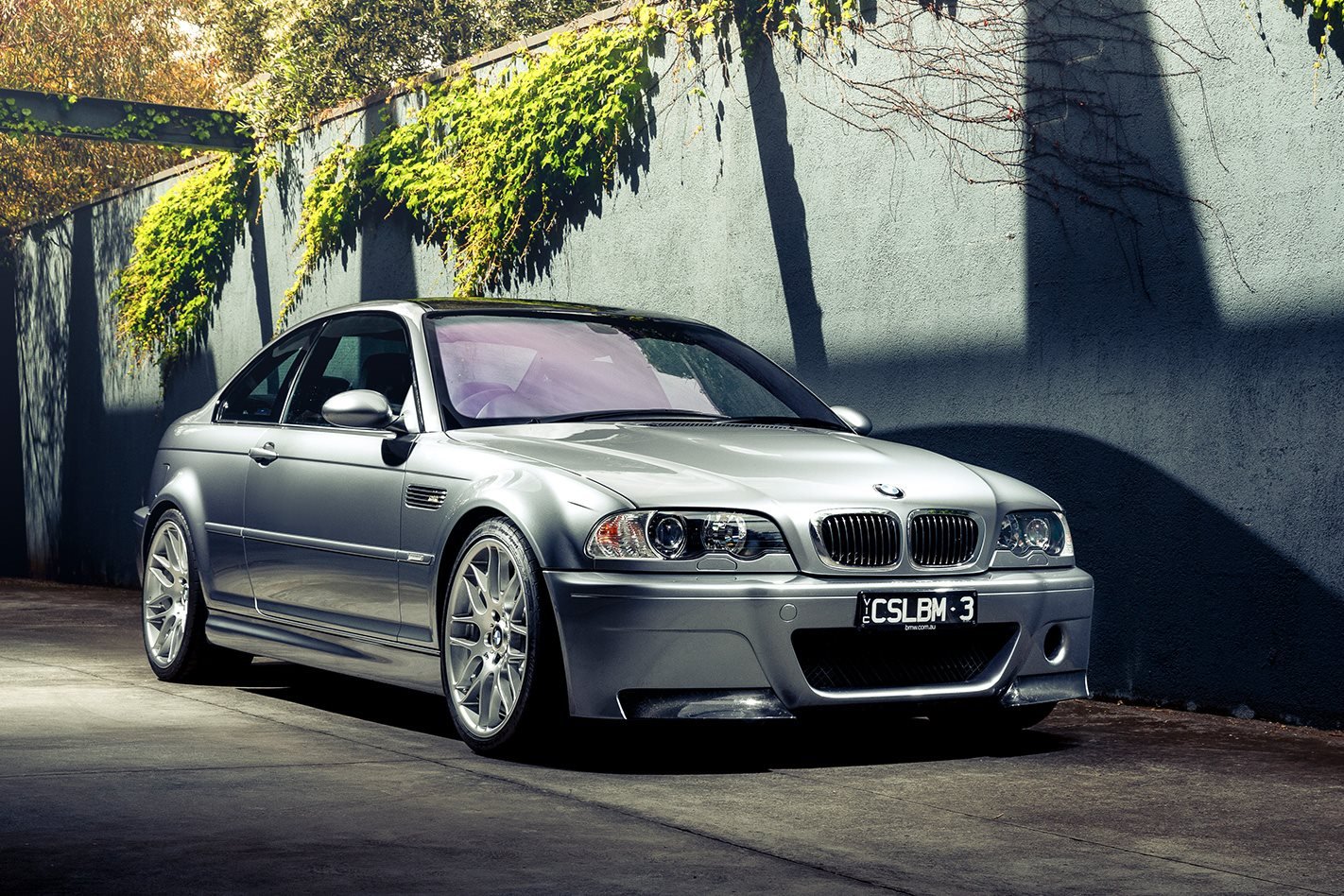THERE’S a lot to be said for rightsizing. The E46 generation of BMW’s M3, built between 2000 and 2006, is a case in point. It looks as good now as it did when it was unveiled at the 1999 Frankfurt Show, the hanky being whipped off a car that was all fast-twitch muscle, swollen wheelarches and shrink-wrapped overhangs.
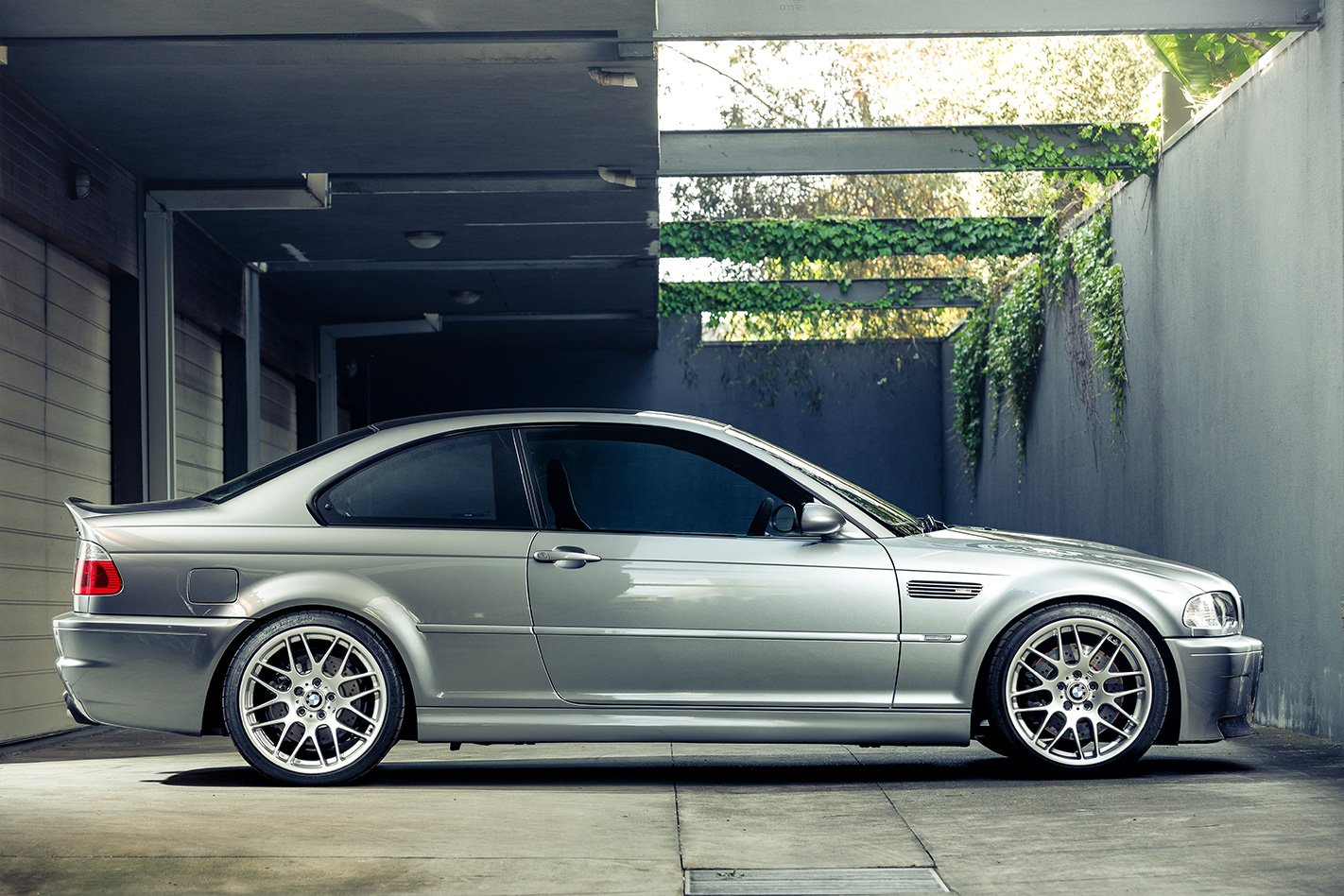
By contrast, the cars that bookended it, the E36 (1992-1999) and the E92 (2007-2013) look nothing like as tautly drawn. The E46 combined the aggression of the original E30 with the six-cylinder charisma of the E36 in the most perfectly proportioned package. Small wonder that the ultimate roadgoing incarnation of the E46 M3, the CSL pictured here, is possibly the most sought-after M3 in the b’s storied history. Only 1383 were ever made, with just 544 sold in right-hand-drive guise and a mere 23 officially made it to these shores.
The CSL was developed to meet a very specific objective. It had to get round the Nurburgring in eight minutes. Nowadays that’s within the aegis of most senior hot hatches but in 2004 this was junior supercar pace. To achieve this, head of body Hans-Bruno Starke and chassis development engineer Peter Schmidt had four key areas to work on: weight, aerodynamics, suspension and tyres. Power was a secondary concern, although changes to the engine management, cams, headers, intakes, valves and exhaust handily lifted peak power from the regulation M3’s 252 to a healthy 265kW.
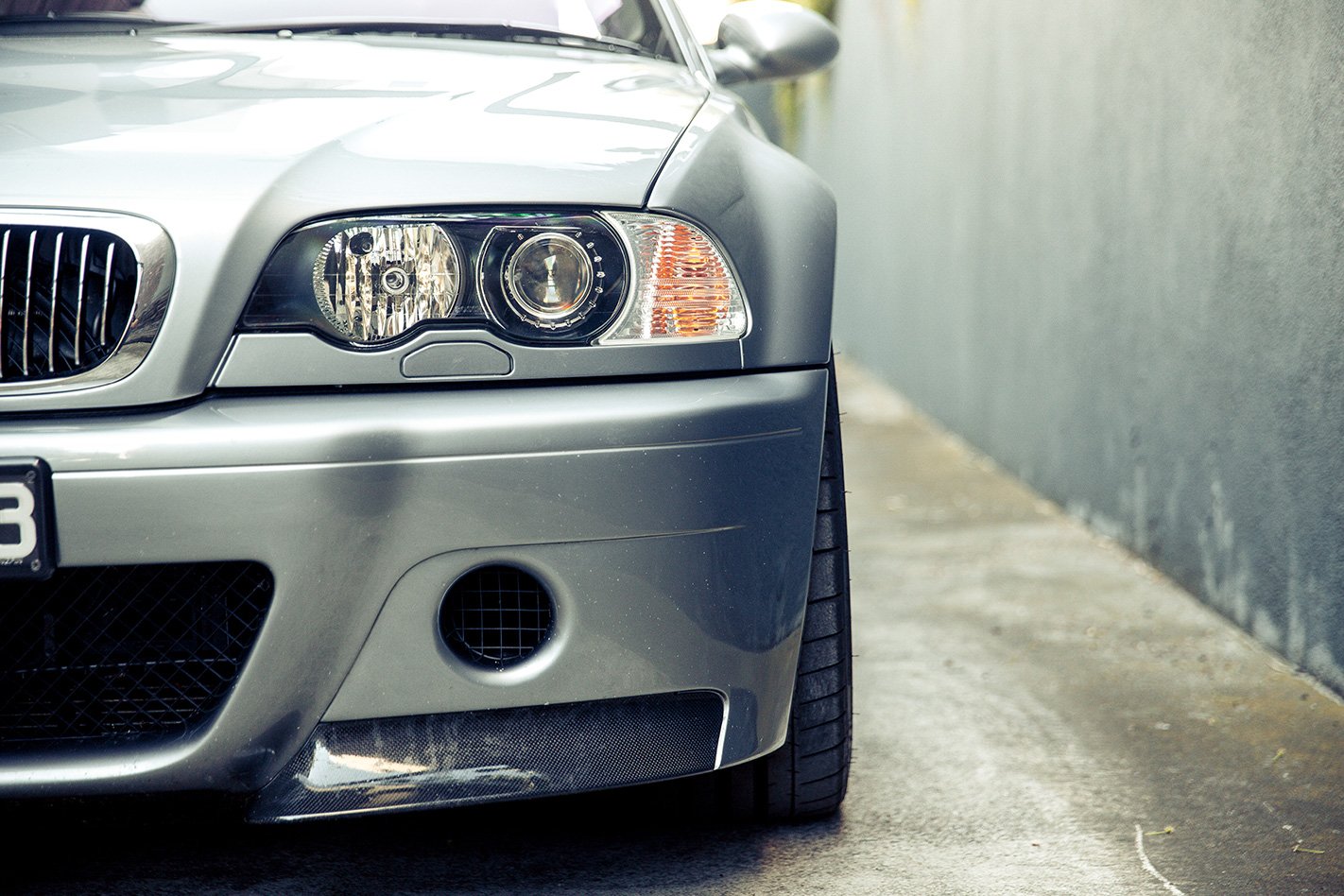
The virtuous circle afforded by weight reduction was the goal. This was the first M car to pioneer the carbonfibre roof, saving 7kg and lowering the centre gravity. Around 50kg came out of the interior, with lightweight seats, centre console, glass and door panels. A couple of kilos came off each wheel, with aluminium lower control arms further reducing unsprung weight. The carbonfibre front bumper shell is a pure racing part, helping to subtly shift weight distribution rearwards. Final distribution was 51:49 front to rear, still not quite Munich’s much-vaunted 50:50.
Based on a hoary old Clarksonism, many believe that the boot floor of the CSL is made of cardboard and can’t hold any weight. Not so. The underside of the boot is metal, the same as any M3 but it does have a lightweight cardboard boot liner. It’s CSL-specific BMW part number 51477895990; removable honeycomb-paper composite panel.
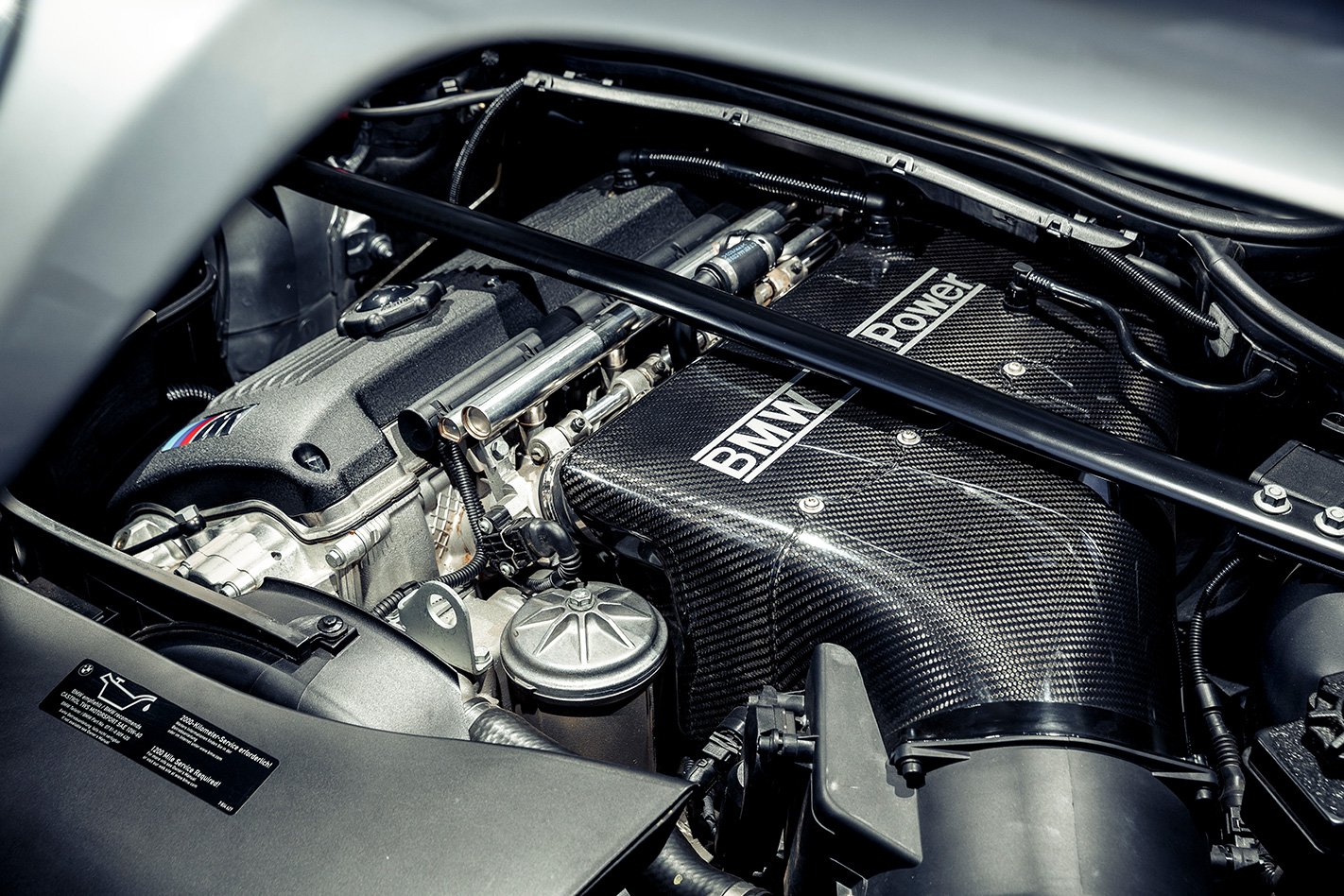
A plastic composite bootlid with built-in spoiler was developed as much for aerodynamic benefit as weight saving, but a huge gain came from the gumball semi-slick Michelin Pilot Sport Cup tyres. Later Cup+ tyres offered a little more wet weather versatility. The CSL rides 10mm lower than a stock E46 M3 and the suspension has been seriously gym-toned. Springs, dampers, anti-roll bars, bump stops, king pins; all were upspecced. A quicker steering rack and bigger front brake discs were also fitted. Somewhat controversially for the time, the CSL foresaw a trend: no clutch pedal for the flagship sports model. It took Porsche more than a decade to catch on to that particular trick. The SMG II ’box (in effect a robotised manual) seems a little quaint now, but it’s still a riot to crack up through the ratios.
Even if you can’t run to the $150,000 demanded of the vanishingly rare CSL, there are plenty of standard M3s from around the $25,000 mark, but you’ll need $35,000 before you start finding well looked-after manual coupes. Cabriolets sold well here in Australia, although keen drivers rightly prefer the considerably stiffer body and lighter weight of the coupe. The manual is a less troublesome partner than the SMG II transmission, which is a league on from the mechanical omnishambles that was the E36’s SMG I, but worn bushes in the diff back plate is an issue that is common to both, manifesting in clunky drive take-up.
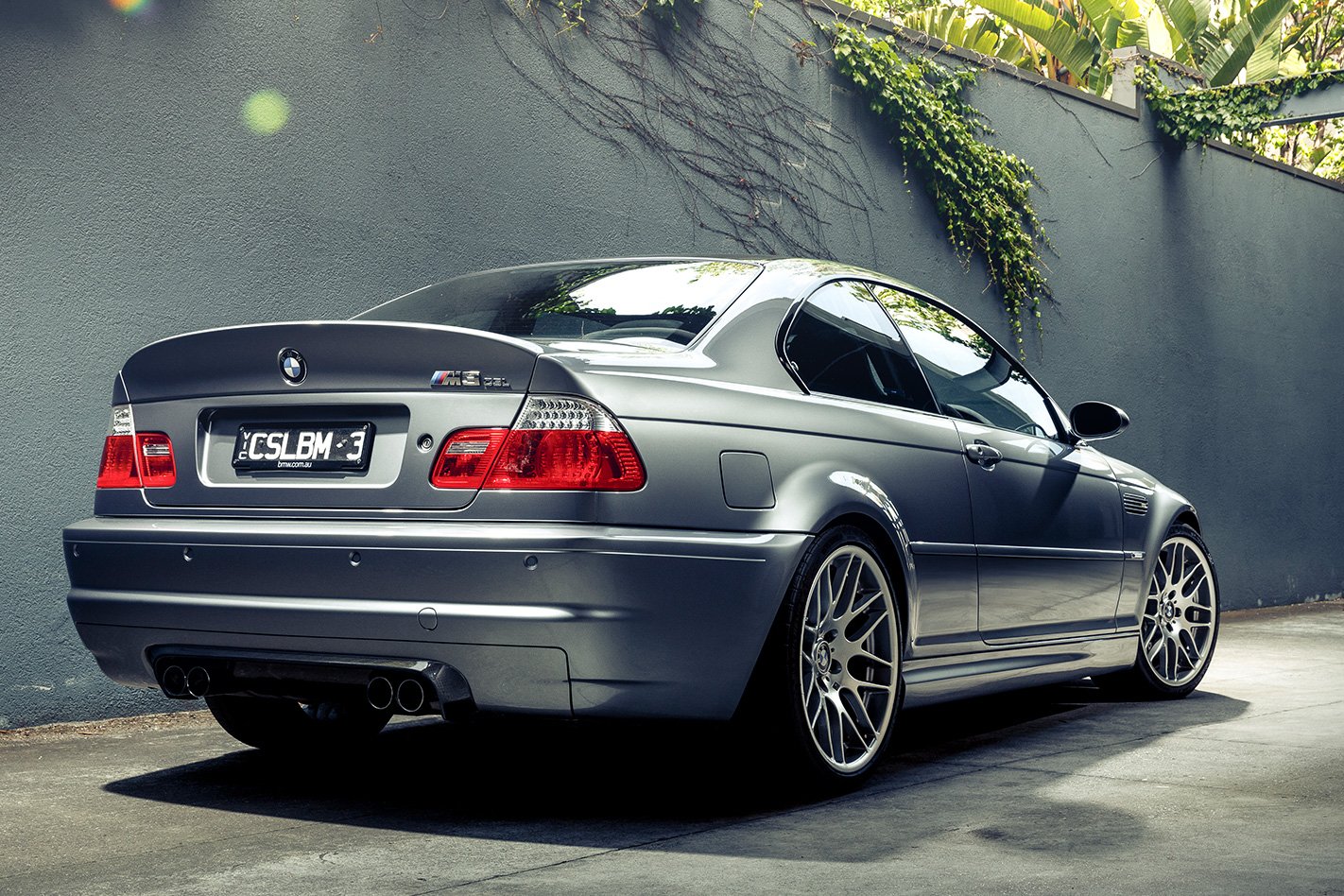
The most significant body issue to look for is cracking where the rear subframe meets the body. This will happen to all E46 M3s in time, and the BMW-sanctioned repair route was to replace the failed metal and inject strengthening foam. These days most independents will remove the rear subframe and weld in reinforcing plates. Listen for clicks from the rear end of the car when accelerating or braking. If the car you’re looking at sits higher on one side than another, it’s likely a broken spring.
The big-ticket issue to check for is a failed VANOS unit. This controls the variable valve timing and a failing unit sounds like a marble in a tin can upon start up. Another thing you will need to budget for is replacement of the retaining bolts for the cam gears. These can come loose over time and if the previous keeper doesn’t know if this work has been done, it’s a sensible thing to pencil in come service time.

Pre-June ’03 engines were prone to crankshaft big-end bearing failure, but these problems will have been sorted by now. Alarms and the tyre-pressure monitoring system have also been known to throw up some rather odd intermittent glitches that can be tricky to diagnose.
The final M3 to feature an atmo six, the E46 still stands up well as a driver’s car. Obviously the SMG II dates it, as does the fairly rudimentary DSC stability control system but it could be specified with satellite navigation and xenon headlights, so it represents an intriguing transition between the sort of quaint classic you’d treat with kid gloves and the convenience and solidity of a modern. In terms of handling prowess, however, the E46 is probably the lairiest M car of the lot. It’s almost as if it’s been built with the sole intent of cremating tyres. Switch out the DSC and the variable-rate diff lock is your friend, encouraging power oversteer at every opportunity. That’s helped by what might be the best steering of any M3, the hydraulic system delivering the sort of communication that betters even the modern F80’s helm.
The brakes date the E46 somewhat, being relatively feeble twin-pot calipers up front, and if you’re planning on track days, AP Racing units are a popular upgrade. An M3 CS model (option S7MAA) was available in the UK and sold as the Competition Package (ZCP) in the US, which offered firmer suspension, bigger brakes and lookalike CSL wheels, but which was also offered with a manual transmission. For adherents of three pedals it’s the pick of the E46 M3 fold.
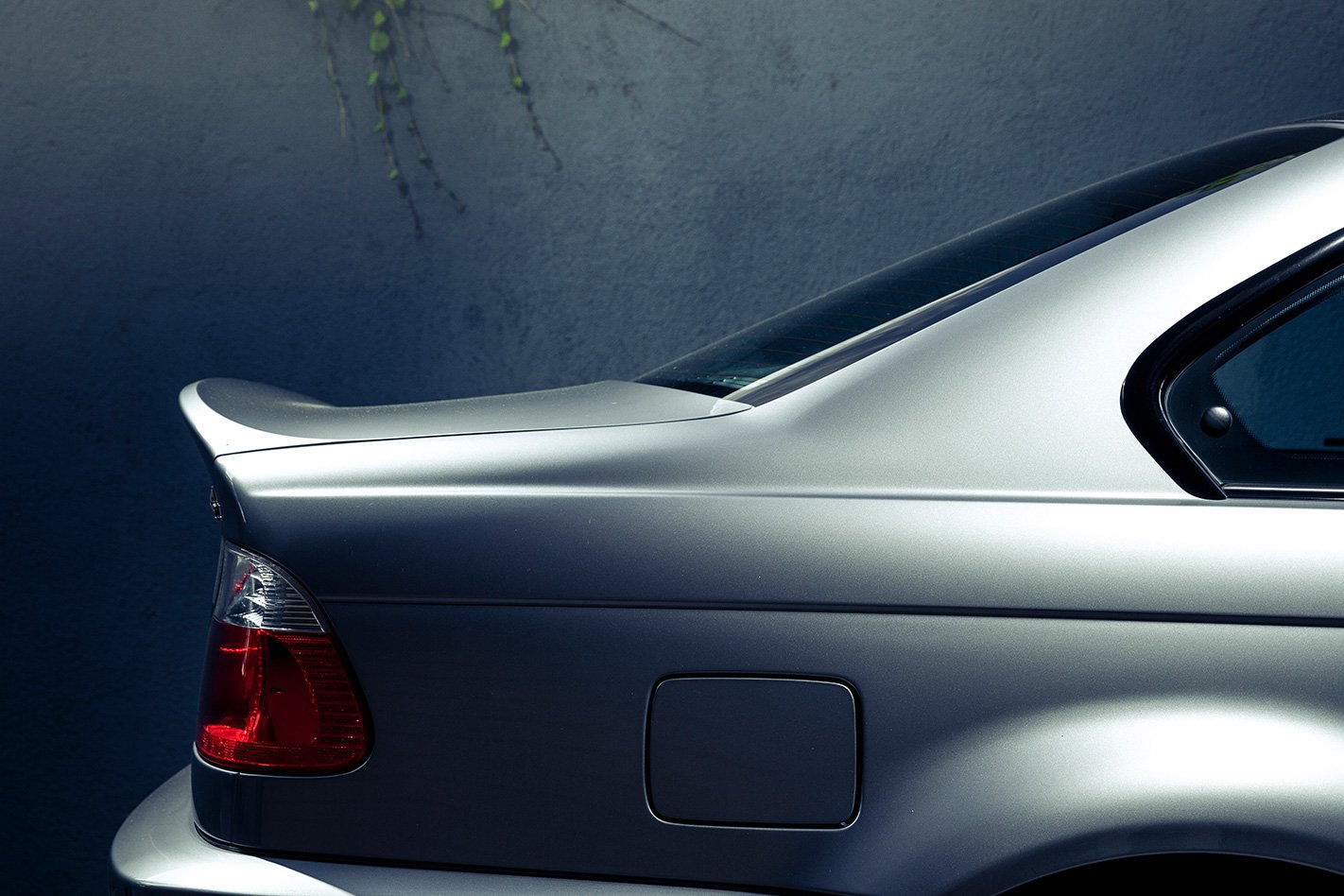
The 3246cc S54B32 straight six is old-fashioned in a good way. Yes, the peak torque figure of 365Nm arrives at a fairly heady 4900rpm, but 80 percent of that figure is yours at a mere 2000rpm. The fact that it makes peak power just 100rpm shy of its 8000rpm redline means you drive the E46 M3 like you’d drive a Porsche 911 GT3, wringing out every gearchange just for a six-pot soundtrack that sounds as if it’s trying to tear itself asunder. It’s the polar opposite to most modern turbo engines that lack inspiration in the upper registers. This engine, with its individual throttle bodies, will all but guarantee the E46 M3’s future collectability.
When Wheels threw the M3 into a comparo with the Mercedes-Benz C32 AMG back in January 2002, there was only ever going to be one winner. “Only when the going gets hairy in the bends does the C32 bow to pressure and acknowledge that its handling isn’t developed to the nth degree,” wrote Mike McCarthy. “No such admission can be wrung from the lower, lighter M3. Its highly disciplined suspension is to handling what its drivetrain is to performance. And where it’s good into and through the apex, the M3’s simply ecstatic on exit – gripping ground and transforming raw power into sheer squirt.” Almost two decades since it was first introduced, only Weissach’s best can equal the sense of connection and fidelity you’ll get from an E46 M3 exiting a corner all crossed up.
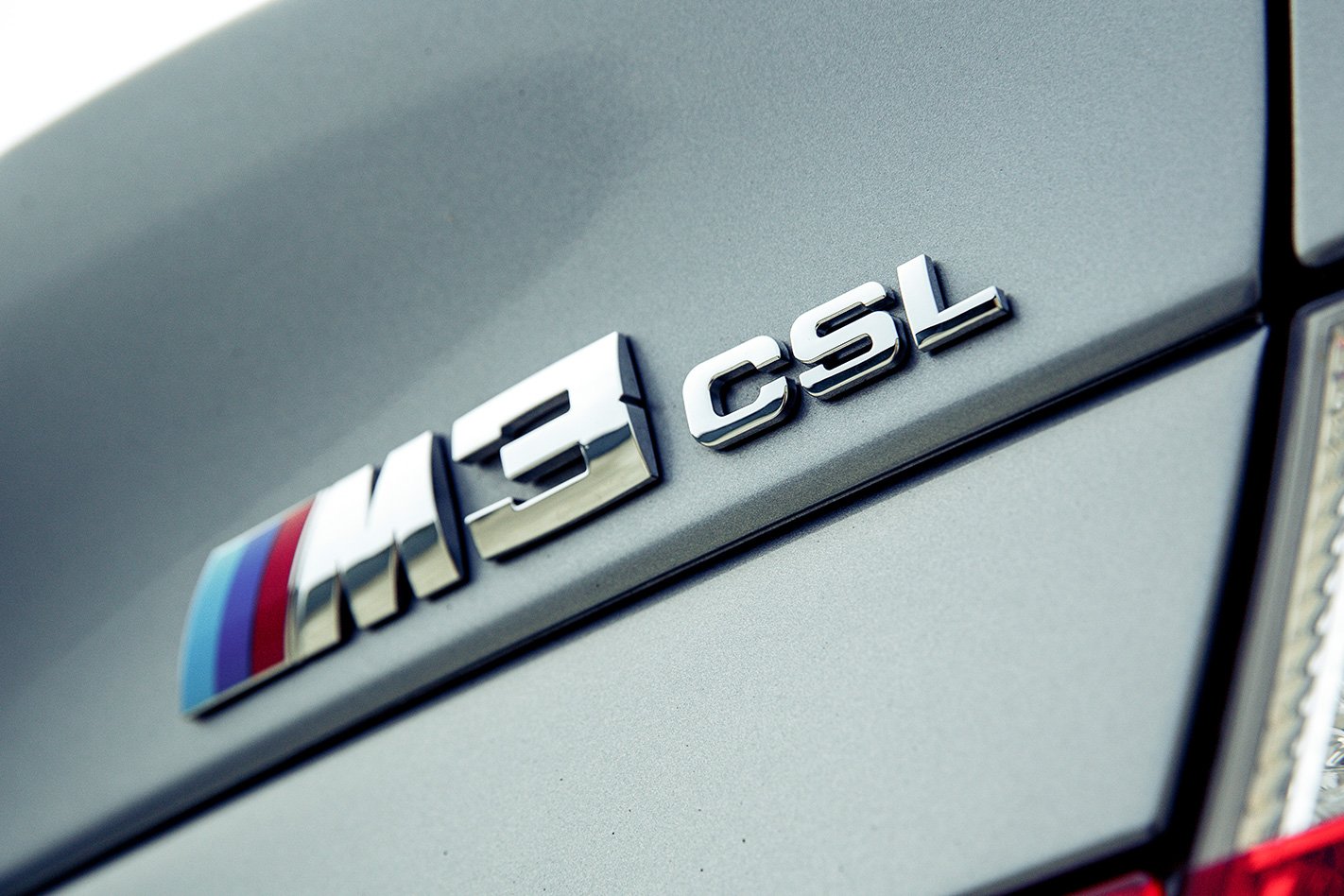
Tracking down honest cars can be a challenge, though. Prices of stock M3s have dipped to the extent that they’re affordable to many who haven’t factored in the not inconsequential cost of maintenance.
Low mileage manual coupes that have had the remedial subframe work done remain the gold standard for E46 M3 buyers, but cars that have yet to have the strengthening work performed represent a workable negotiation position. Expert inspection pays dividends when buying, but net a good one and you’ll appreciate why the M3’s junior exotic feel has endeared it so many enthusiasts. Its amalgam of aggression and accessibility is brought about by a blend of ingredients that never feel over-egged. Twenty years after we first saw it, the E46 M3 remains an object lesson in near-perfect balance.


